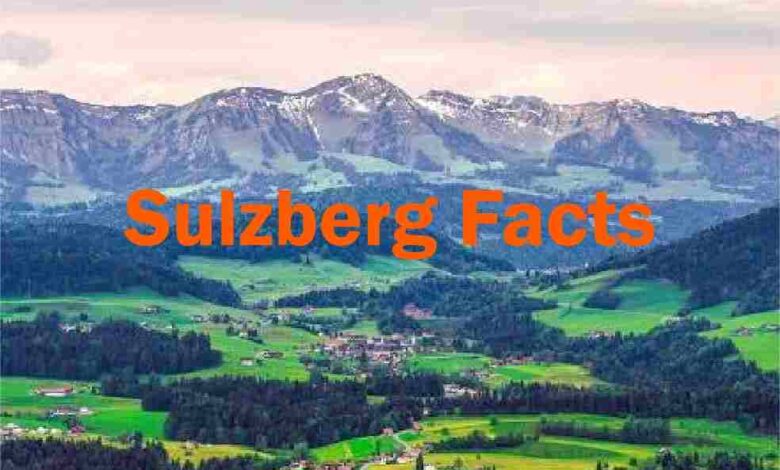Interesting Sulzberg Facts You Didn’t Know

Sulzberg, located in the heart of Austria’s Vorarlberg region, may not be as famous as Salzburg or Vienna, but it holds a treasure trove of unique features that are sure to fascinate. This small village is nestled on a plateau at an altitude of 1,015 meters, offering breathtaking views of the Bregenzerwald region and Lake Constance. Its rich history, natural beauty, and cultural significance make it a hidden gem worth exploring. Here are some interesting Sulzberg facts you might not know.
Sulzberg Facts: A Village with Deep Historical Roots
The first known history of Sulzberg reaches back to 1249. Historically, it was called “Sulzeberg,” and belonged to the area of control by means of the Counts von Bregenz. However, the history books will tell you that Sulzberg’s first settlers supplied cheese and lard to the Count of Bregenz – an early nod to agricultural life in this small village. Despite the passage of time, this tiny village has saved much on heritage, with some old historical bastions still dating back to the 15th century.
The Majestic St. Lawrence Church
The Parish Church of St. Lawrence in Sulzberg stands as a remarkable architectural and historical landmark, showcasing a rare Empire style in the region of Vorarlberg. Expanded between 1828 and 1829, the church’s design is attributed to Alois Negrelli, who is notably recognized for his later contributions to the construction of the Suez Canal. The church’s distinctive Empire style, characterized by grandeur and simplicity, sets it apart from other churches in the area.
Inside, visitors are greeted with intricate designs and impressive religious artwork that reflect the elegance of the period. The unique blend of history, architecture, and art makes the Parish Church of St. Lawrence a must-visit, offering insight into both regional and European cultural heritage.
Chapel of St. Leonhard: A Place of Pilgrimage
Close to the parish church is the Chapel of St. Leonhard, another historical treasure of the Sulzberg community. Built in 1497, the chapel has served as a place of pilgrimage for visitors and residents, evidenced by its Baroque frescoes and wooden ceilings.
Thus, even the Swedes turned it into horse stables during the Thirty Years’ War, and they renovated it three times, with the most recent renovation in 2006. The chapel’s historical and religious significance attracts people from various regions to admire its beauty and pray in its walls.
The Marienlinde: A 400-Year-Old Tree with a Story
The Marienlinde is a lime tree in the middle of Sulzberg, which is over 400 years old. It is a tree built around a religious statue of Mary and Jesus, and its inscription reads, “Mary of victory, end the war and protect us with your child! From the Marienlinde.” This is some of the identity of Sulzberg, an ancient symbol of faith and community spirit.
Sulzberg Facts: Unique Coat of Arms
Sulzberg’s Unique Coat of Arms features a black ox’s head above a three-peaked green mountain, reflecting its agricultural background. Likely created by church archivist Andreas Ulmer, the coat of arms symbolizes the central role of farming in the community. The ox represents strength and endurance, key traits that have helped the village thrive over time.
Outdoor Adventures Await
Outdoor Adventure in almost all directions awaits in Sulzberg, a haven for outdoor activities. The Nordic Sport Park offers over 20 kilometers of cross-country skiing in winter, and those seeking more thrills can enjoy biathlon courses. In summer, visitors can explore scenic hiking trails across the high plateau, making Sulzberg a year-round destination for nature lovers.
Cultural Events and Traditions
Sulzberg may be small but it is abundant with various cultural activities and traditions. The public art ‘1,740 I’s,’ situated in the modernistic municipal building, stands out as Posio’s most unique cultural feature. The residents of Sulzberg took a lot of pride in their heritage and the resulting creation was powerful, using hair from some community members.
Sulzberg Facts: Ideal Location for Day Trips
Sulzberg is also an ideal location to discover more of Vorarlberg. And, only a few minutes by car from Lake Constance where water sports and boat trips are abundant. Bregenzerwald, known for its wooden buildings and craftsmanship, is just a short trip away. Sulzberg is an amazing place to base yourself, whether you want a slower pace in nature or are keen for all the local culture.
Sulzberg Facts: The Nagelfluhkette Nature Park
Nagelfluhkette Nature Park Sulzberg is part of a park stretching from Bavaria, Germany, to Vorarlberg, Austria. Experience stunning rock formations and varied wildlife at this park. Endangered flora and fauna thrive in the habitat, which you can see along the scenic hiking trails. Sulzberg is the perfect destination for all eco-tourists and nature enthusiasts due to its close location to this natural wonder.
A Quiet Escape with Stunning Views
This is a beautiful place to escape the tourist crowds. Sulzberg is where it’s at if you love peace and quiet! A short climb connects the wood-clad elevations that allow long views of zigzagging fields and forests, rising up to the undulating pastures of the Bregenzerwald. The largest natural curtains here have an enticing sparkle across shimmering Lake Constance. Whether relaxing over coffee at a café or chilling in the fresh grass, Sulzberg’s serene atmosphere is the perfect place for rest and introspection.
The Bottom Line
Sulzberg might not be as popular a destination in Austria, but with its glorious past, immaculate natural surroundings, and vibrant community blending together seamlessly, it is definitely one of the places that you must visit if an authentic Austrian experience is what interests you. Sulzberg has something for everyone, from old churches and the lime tree to outdoor adventures.
In that case, perhaps the next time you hop on a plane to Austria, Sulzberg will grab hold of your heart too. Sulzberg offers a great blend of history, nature, and culture, with much to discover and learn.




